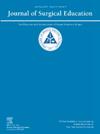VitalSurg:人道主义背景下外科任务转移培训项目的结果
IF 2.1
3区 医学
Q1 EDUCATION, SCIENTIFIC DISCIPLINES
引用次数: 0
摘要
重要外科培训计划(VitalSurg)是一项任务转移计划,旨在通过培训全科医生执行基本手术来建立外科沙漠地区的当地外科能力。该项目与无国界医生组织(MSF)合作实施,已在南苏丹进行了两次试点。本研究评估了第二次迭代,它反映了从第一次迭代中学到的经验教训中提炼的课程和综合评估策略。我们试图研究人道主义临床护理中基于能力的外科培训的可行性、有效性和适应性。我们对培训计划进行了综合方法总结性评估。定量的学员表现数据——包括模块前和模块后的测验、口头和书面考试、病例日志和可信赖的专业活动(EPAs)——与来自培训师、学员和无国界医生利益相关者的关键线人访谈(KIIs)的定性数据一起进行了分析。本研究在Aweil州立医院进行,该医院是南苏丹北部Bahr El Ghazal的一家无国界医生支持的地区医院,在资源有限的环境中提供产科和儿科外科护理。两名本地医生被纳入第二组VitalSurg队列。结果在18个月的培训计划中,受训者平均执行了1305个程序,并在所有评估领域都有所改善。完成了446份EPAs,学员之间差异显著(281对165份EPAs完成;162对53),反映了不同的参与度和技能获取水平。EPA的通过率相差很大,从皮肤移植的81.7%到剖腹产的43.5%和剖腹手术的22.0%。尽管存在基础设施的限制,但基于能力的教育工具还是可行的。kii强调了常见的培训挑战,包括案例组合、服务与教育的比率和培训师的多样性,以及改进的机会。结论vitalsurg证明了将任务转移外科培训纳入人道主义临床活动的可行性。这种模式为在受冲突影响的环境中扩大获得安全外科护理提供了一种有希望的、可扩展的战略。本文章由计算机程序翻译,如有差异,请以英文原文为准。
VitalSurg: Outcomes From a Surgical Task-Shifting Training Program in a Humanitarian Context
Objective
The Vital Surgery Training Program (VitalSurg) is a task-shifting initiative designed to build local surgical capacity in surgical deserts by training generalist doctors to perform essential procedures. Implemented in partnership with Médecins Sans Frontières (MSF), the program has undergone 2 pilot iterations in South Sudan. This study evaluates the second iteration, which reflects a refined curriculum and integrated assessment strategy informed by lessons learned from the first iteration. We sought to examine the feasibility, effectiveness, and adaptability of competency-based surgical training embedded within humanitarian clinical care.
Design
We conducted a mixed-methods summative evaluation of the training program. Quantitative trainee performance data—including pre- and postmodule quizzes, oral and written exams, case logs, and Entrustable Professional Activities (EPAs)—were analyzed alongside qualitative data from Key Informant Interviews (KIIs) with trainers, trainees, and MSF stakeholders.
Setting
This study was conducted at Aweil State Hospital, an MSF-supported district hospital in Northern Bahr El Ghazal, South Sudan, which provides maternity and pediatric surgical care in a resource-limited setting.
Participants
Two local medical doctors were enrolled in the second VitalSurg cohort.
Results
Over the 18-month training program, trainees performed an average of 1305 procedures and improved across all evaluation domains. 446 EPAs were completed, with significant variation between trainees (281 vs. 165 EPAs completed; 162 vs. 53 passed), reflecting differing levels of engagement and skill acquisition. EPA pass rates ranged widely, from 81.7% for skin graft to 43.5% for Caesarean section and 22.0% for laparotomy. Competency-based education tools were feasibly implemented despite infrastructure constraints. KIIs highlighted common training challenges—including case mix, service to education ratios, and trainer variability—as well as opportunities for refinement.
Conclusion
VitalSurg demonstrates the feasibility of embedding task-shifting surgical training into humanitarian clinical activities. This model offers a promising, scalable strategy to expand access to safe surgical care in conflict-affected settings.
求助全文
通过发布文献求助,成功后即可免费获取论文全文。
去求助
来源期刊

Journal of Surgical Education
EDUCATION, SCIENTIFIC DISCIPLINES-SURGERY
CiteScore
5.60
自引率
10.30%
发文量
261
审稿时长
48 days
期刊介绍:
The Journal of Surgical Education (JSE) is dedicated to advancing the field of surgical education through original research. The journal publishes research articles in all surgical disciplines on topics relative to the education of surgical students, residents, and fellows, as well as practicing surgeons. Our readers look to JSE for timely, innovative research findings from the international surgical education community. As the official journal of the Association of Program Directors in Surgery (APDS), JSE publishes the proceedings of the annual APDS meeting held during Surgery Education Week.
 求助内容:
求助内容: 应助结果提醒方式:
应助结果提醒方式:


